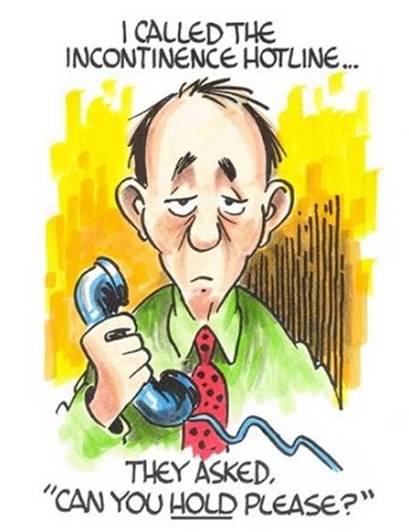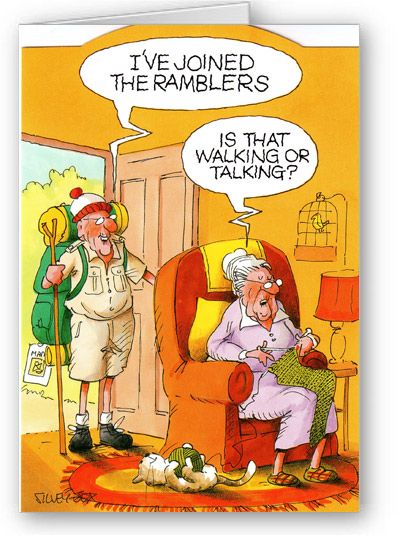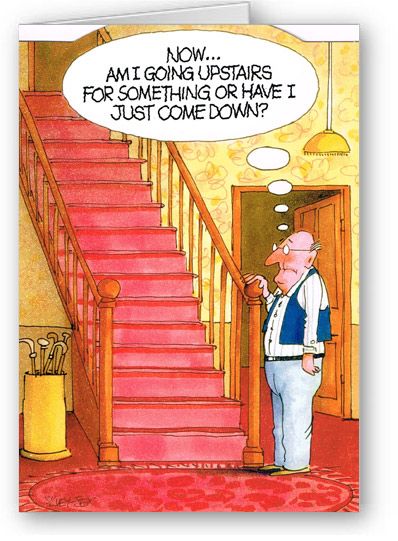
Issue
#36, June 2014
Welcome
to theJune 2014 issue of the Elderwoman Newsletter
- an e-zine for
21st century elderwomen committed to radical aliveness.

VIEW
FROM THE DESK
 |
First,
thank you to Elle Tyler for the picture above. It is just one of the
many beautiful trees she has photographed in Central Park, NYC.
There are flowers everywhere here at the moment, too. Our
Devon wildflowers are at their best and walking along the lanes, as I
do most days, is a sheer delight to the senses.
|
Life has been so full and interesting that I seem to take longer and
longer to get around to doing these newsletters. Back in the beginning,
when I first started them, I was doing four a year. Then it dropped to
three and now it is six months since I did one so I suppose I must
admit that they have dropped to just two a year. That seems to be the
best I can manage nowadays.
But perhaps it is just as well. I don't know about you, but there is so
much information pouring on to my computer screen on a daily basis that
sometimes I feel as though I am drowning in it! We don't have TV or
radio in our house (well we do own a radio but it doesn't work unless
we carry it to an upstairs windowsill and point it north and even then
it's crackly and intrmittent, so it is at least twelve years since
either of us bothered to try it) but even with our quiet,TV-free,
radio-free lives we still suffer from information overload! If you are
the same, then you're probably thankful I don't churn out
newsletters any more often.
Anyway, here's this one, with my love and blessings
Marian
|
FEATURE
ARTICLES
I Post, Therefore I Am

There has been a lot of debate, lately, about
whether or not
the extraordinarily high level of connectivity we now have—with cell
phones,
SMS, email, the Internet etc.—is a blessing or a curse.
Some people are saying that human beings are
so busy
telephoning and texting and electronically chatting that they are
losing their
ability to form ‘real’ friendships or have face-to-face conversations
in the
real, physical world. Relationships and interactions, they say, are
becoming
more and more shallow.
Yet others
are saying exactly the opposite. For them, being
able to Skype and text and send instant photos and videos makes them
feel
closer than ever to all the people they care about who live too far
away to
visit. For them, relationships and interactions feel deeper because
they can
stay in closer contact.

I think the truth is that every time humans
have invented a
new technology that changes life for everybody, there is a long phase
of
reorganization as each individual and each group comes to terms with
the change
and re-shapes the pattern of daily life to fit the new parameters. This
is
probably what happened, way back, when our ancient ancestors learned to
use
fire and all of a sudden dinner went from raw to cooked. You could
imagine cave
man and cave woman trying to figure out how to co-ordinate mealtimes,
now that
they had to factor in the time it took to roast a leg of auroch, and
arguing
about whether it was more satisfying to have blood dripping down your
chin or
to savour the new taste of gravy.
It happened
in Palaeolithic times when we switched from
being hunter-gatherers to settlers, growing our food instead of
foraging far
and wide in search of it. What a huge change that was! Some people
probably
agonized for ages about how they missed the exercise and the constant
travelling whereas others were delighted about no longer having to walk
five
miles to find a piece of ripe fruit. The same sort of process happened
with the
invention of the alphabet and then with the printing press, the
harnessing of
electricity, the telephone, the internal combustion engine, television,
computers…and it is still happening. The only difference is that
nowadays the
pace of change is becoming ever faster.

There
will always be casualties. When alcohol came into use,
it added an extra, delightful dimension to the lives of all those who
learned
to drink it in moderation, to enjoy a fine wine with their dinner, to
cool off
on a hot day with a chilled lager or to savour a single malt on a cold
winter
evening. But for some it also provided a new opportunity for addiction
and the
ruination of health and lives. Cars can bring us an amazing level of
convenience but they can also kill us. They get us to places faster but they can make us lazy and unfit and they
contribute hugely
to pollution and climate change. TV can bring us instant news from
around the
world but it is also being used to manipulate us, sell us stuff we
don’t need
and encourage us to use more resources than our planet can offer…and on
and on
and on.
Eventually, after this period of
reorganization that follows
each big technological leap, we learn all the lessons we need to learn.
We
learn the pros and cons, the advantages and disadvantages, the
opportunities
and the dangers. As individuals, we figure out what works for us and
what
doesn’t. We learn to discriminate, to make choices, to fine-tune. As
groups,
and as a society, we figure out—sometimes painfully, as we are at the
moment
with regard to climate change, peak oil and the damage consumerism has
wrought—how to adapt and survive and maybe even how to thrive.

Sometimes,
as is happening now with anthropogenic climate
change and the environmental crisis, we need to come right to the edge
of
disaster before we wise up. So if today’s unprecedented level of
connectivity
is going to cause social problems on a large scale, perhaps we have to
find
that out the hard way, just as we found out that smoking was bad for
our health,
that DDT was destroying wildlife and fast food was causing record
levels of
obesity and type 2 diabetes.
We also need to remember that a lot of
today’s amazing
technology is based, to some extent or another, on the availability of
oil and
other non-renewable resources such as the rare earths that are used in
electronics. And when those things finally run out—which they
eventually will—some
of the gadgets we have come to take for granted may start to disappear
from our
lives again. So it behoves us to keep old skills alive and to pass them
on, just
in case. (It will be funny, won’t it, when we elders find ourselves
teaching
our great-grandchildren to use a slide rule because electronic
calculators have
become scarce or to read a map because nobody has GPS any more!)
Meanwhile, I am busy finding my own ‘sweet
spot’ when it
comes to how much time I spend interacting with the rest of the world
electronically
and how much time I spend doing all the other things I like doing. Each
one of
us has to work out the balance for herself.
So where do you fit on the spectrum? Are you
a determined
hater of Facebook? Do you harrumph at the sight of all those young folk
walking
and texting at the same time and taking endless ‘selfies’ with their
phones for
no particular reason except that they can? Or are you a lover of all
things
electronic, with a full surround-sound entertainment centre in your
basement
and a car that talks you through every journey you need to make? Or,
like me, are
you somewhere in the middle, finding your way towards your own sweet
spot?

Back to top
BOOK REVIEW: What Makes Olga Run?
“When you’re breaking
records, rather than hips, at an age
most people will never live to see…what gives?”
This rhetorical question,
posed by Bruce Grierson , could
well serve as the perfect logline for his recently published book What Makes Olga Run?
And I am sure that many people who have seen
or read about Canadian nonagenarian Olga Kotelko winning yet another
gold medal
to add to her vast collection will have wondered the same
thing.
|
 |
|
For in
her
mid-seventies, the stage at which so many of us seventy-somethings are
starting
to slow down and feel creaky, Olga took up athletics. She started
running,
jumping, throwing the javelin, the hammer, the shot-put. She started
competing.
She started winning. And now, at just a few years short of her century,
she
holds the record for her age group in just about every track event.There have been many,
many newspaper reports, magazine
articles and videos about Olga. We all love a story about extraordinary
people—or rather, about seemingly ordinary people doing extraordinary
things.
But what Grierson has done with this book goes way beyond the ‘Wow,
isn’t she
amazing?!’ and even beyond the ‘What drives her?’ in order to drill
more deeply
than anyone ever has into questions about longevity, about physical
fitness,
and the growing phenomenon of ‘super seniors’—men and women who are
staying
fitter and more active way longer than statistics might predict.
For Grierson, who at
midlife is starting to worry about his
own lack of fitness and stamina, Olga soon becomes a quest. And like
the
archetypal questing hero, he enlists the help of many others as he sets
out on
his journey of discovery. He and Olga travel around, talking,
investigating,
taking battery after battery of tests, being probed and prodded,
questioned and
analysed until she is almost certainly one of the most thoroughly
checked out
women in North America. Is it just her lucky genes that make her able
to keep
winning races at 95? Is it her psyche? Is it the structure of her
muscles, her
brain, the way she was brought up? Is it Nature or nurture, practice,
determination, personality, motivation or just sheer, dumb luck?
It is a fascinating
tale—and also a meandering one, for
along the way we meet various other people who, like Olga, are atypical
for
their age group. We also find ourselves acquiring, almost by some sort
of
osmosis, a lot of new information about the ageing process. So in a way
this
book is like a mixture of gerontology 101, a fascinating biography and
a
detective story.
Which means, of course,
that at the end we want to know the
answer. What does make Olga run?
For
if that question can be answered, then—provided it isn’t just her
genetic
inheritance or dumb luck—maybe there is a formula and if we know the
formula
and follow it, then we, too, can remain fit and active and in
possession of all
our marbles, right up to 100. That was part of this author’s motivation
for
starting the book in the first place and it is almost certainly what
will
persuade a lot of people to buy it.
 |
The answer, when we get
to it, is not quite that simple. Few
things are, when it comes to studying living organisms, for life on
Earth has a
level of complexity and a depth of mystery that remains forever beyond
the
reach of our scientific probing. But along the way we find ourselves
gaining a
better and better understanding of the many factors that play a part in
keeping
us fit, healthy, active and fully alive right through our eighties and
nineties. |
We cannot all be Olgas and we probably would
not want to be,
for not
everyone is interested in running and jumping and winning medals, but
by being
the focus of this intensive study, a role model of sorts, a guinea pig,
a peg,
if you like, on which to hang our preoccupation with our own trajectory
into
old age, Olga has given us a lot to think about. And I, for one, am
grateful to
her and to Bruce for this lovely gift. http://whatmakesolgarun.com/

|
LINKS/REPORTS/NEWS/BITS
AND PIECES
I'm In Love With Mr Yippee - an
amusing piece about a new electrical device. By Roz Warren
******************
'From Birth to 100 in 150 Seconds'
In October 2011, filmmaker Jeroen Wolf
started documenting
people from age zero to 100 in the city of Amsterdam, approaching them
in the
street and asking them to say their age in front of the
camera. This fascinating little video is the result
Thanks
to 'Senior
Planet' for these last two items and for
a number of other news items of interest to our readership.
I recommend signing up for their newsletter. (It's free.)
******************
|
. |
|
This
is another place on the Internet that may well be of interest to
readers of this newsletter. It is a multi-author blog, written by a
group of Third Age women, all of whom have something interesting to say.
Here is the link to the Silver
Century Foundation blog.
|
|
******************
|
|
| Elderwoman of the Deep |
|
 |
Usually,
all the items about elders that you find in this newsletter are about
human elderwomen. But this article is about a venerable elderwoman of
an entirely different species. She is 'Granny Orca,' now 103 years old.
And she is making liars out of the folks at SeaWorld. Click here to read all about
her.
|
|
******************
|
|
Spotted on Facebook - Some Inspirational
Posters



****************** |
|
|
Back to top |
|
 |
|
|
A message from Carol
Orsborn...
River Diary: My
Summer of Grace, Solitude and 35 Geese
I want to let you know about the
release of the
follow-up to my critically-acclaimed book Fierce
with Age: Chasing God and Squirrels in Brooklyn.
Having left New York to take up the challenge
of living a life of joy on a
riverbank in Tennessee, River Diary, My
Summer of Grace, Solitude and 35 Geese, continues to
chronicle my spiritual
adventures on the wild side of midlife. After authoring 21 books with
publishers like Random House, Avon and New World Library, I am sharing
this
60-page morsel free for a limited time.
|
|
| About the River Diary
The summer I
turned 65, I made a sacred vow. I would
sit by the river that runs behind my house in search of joy every day
until God
answered my call. I had just published my 21st book and I had
no right to
any complaints, but still I wanted more.
Accompanying me on my pilgrimage were the
readings of
mystics, saints and wise elders from a variety of spiritual and
religious
traditions, including Thomas Merton, Henri Nouwen, May Sarton, Zalman
Schachter-Shalomi and many more. But it was the river,
itself, that
proved to be my greatest teacher.
|
 |
|
|
What follows is is a 60-page PDF of the diary
I kept as I
sat day by day, chronicling the dynamic tension between the pull of the
past,
concerns about the future and my deepest desire for merger with the
divine. Did I succeed? And ultimately, Did it
extract a bigger
price than I had anticipated having to pay?
I invite you to join me on this pilgrimage
and begin by
asking you the questions that initiated it all for me : If what you
really want
in the end is to sit here with me enjoying the river, why don’t you
just do it
now?
Click
HERE to download
the River Diary
|
|
|
Any assistance in helping to get the word out
would be most
welcome. http://carolorsborn.com/river-diary/
|
|

|
|
POETRY
|
Certainty
I’m pleased that there are those
That question why a certain house
Gets flooded while the house next door stays dry.
Unpredictability. Factors, causes, reasons why;
Component circumstance, dynamic;
Here we see the butterfly, effect rhapsodic.
Is there accident and fortune’s hand at all -
Foreseeable, predictable
In some vague laws unseen?
Shapes between,
Shaping patterns and connections
In coincidence?
What is this dance of risk and chance?
Why is there chance at all?
Uncertainty could disappear
If everything was measurable (but it ain’t).
Adorable and quaint,
But doubts and things that aren’t clear -
Always here.
The ordinary me has limits.
Ordinary me can never see
The butterfly effect, the tiny
Waves that make up happenings;
The subatomic world that keeps on changing hungrily,
Lazily, chaotically, eternally.
Probable and possible – which is which -
Questions in a witch’s brew, their secret prank.
For the ordinary you and me.
I think it’s safe to say today there is no certainty.
And if there is, it’s in God’s databank.
© Arlene
Corwin, 2014

Arlene, who lives in
Sweden, is a prolific poet with a wonderfully quirky and witty 'take'
on life.
She's one of the many interesting women on our Elderwomanspace
online network, where
she often posts her writing.
Arlene’s
new book!
'CIRCLING ROUND NATURE'
"Circling
Round Nature has as wide a scope as has nature, the opportunities for
observations and reaction diverse endless...the flattened frog on the
road, the
mushroom, the plasticized face...the result has become a mix of 269
minutely
observed, moving, thought provoking, colloquial and often downright
funny
poems."
|
|
|




















